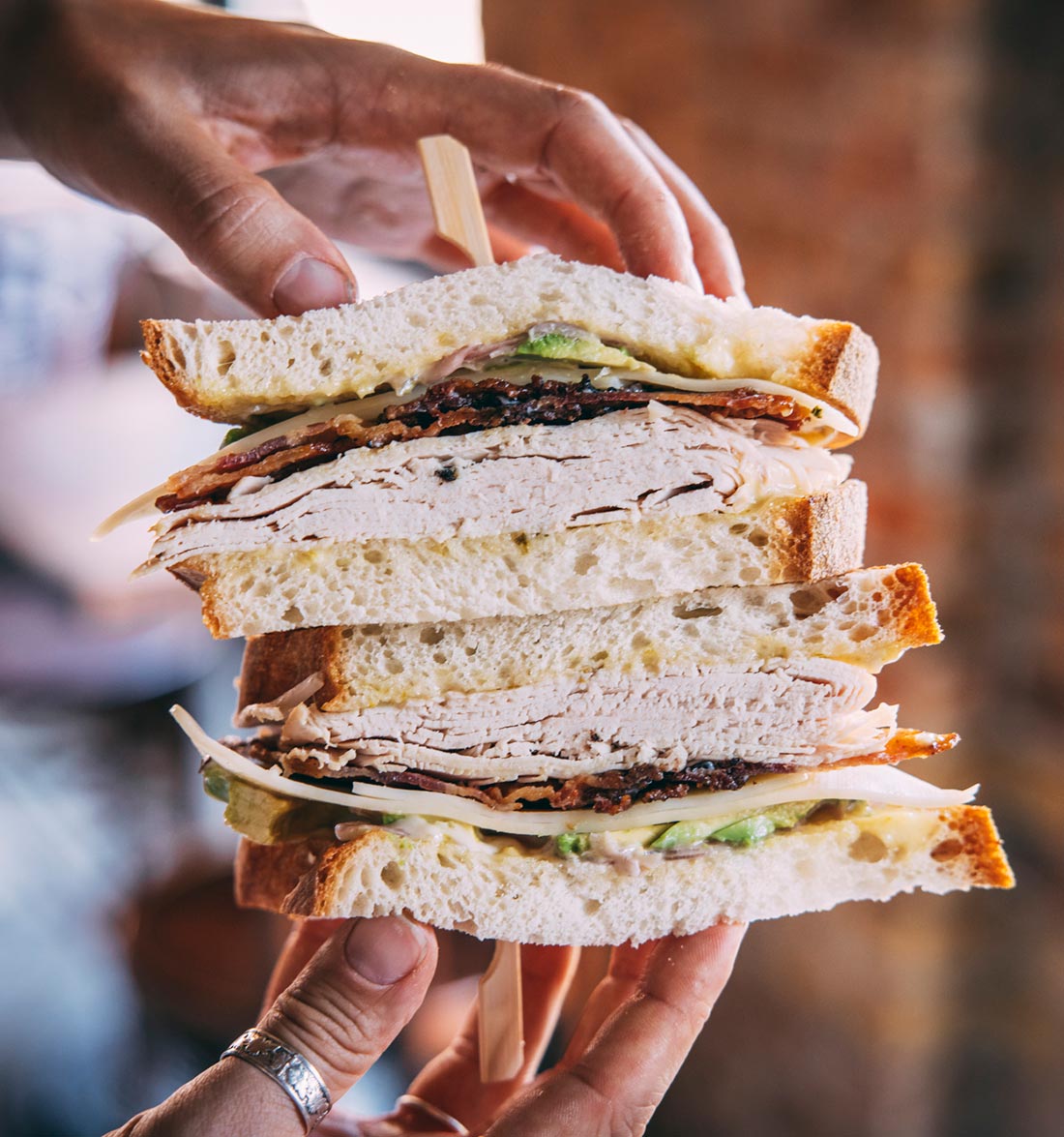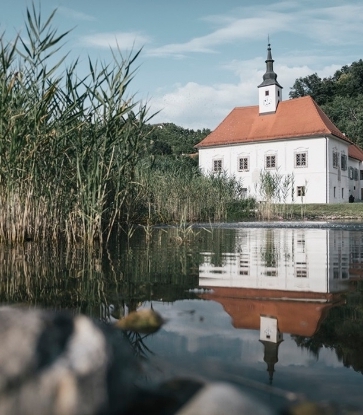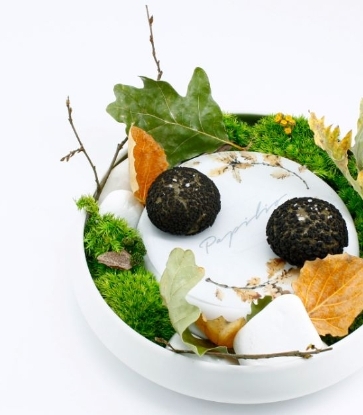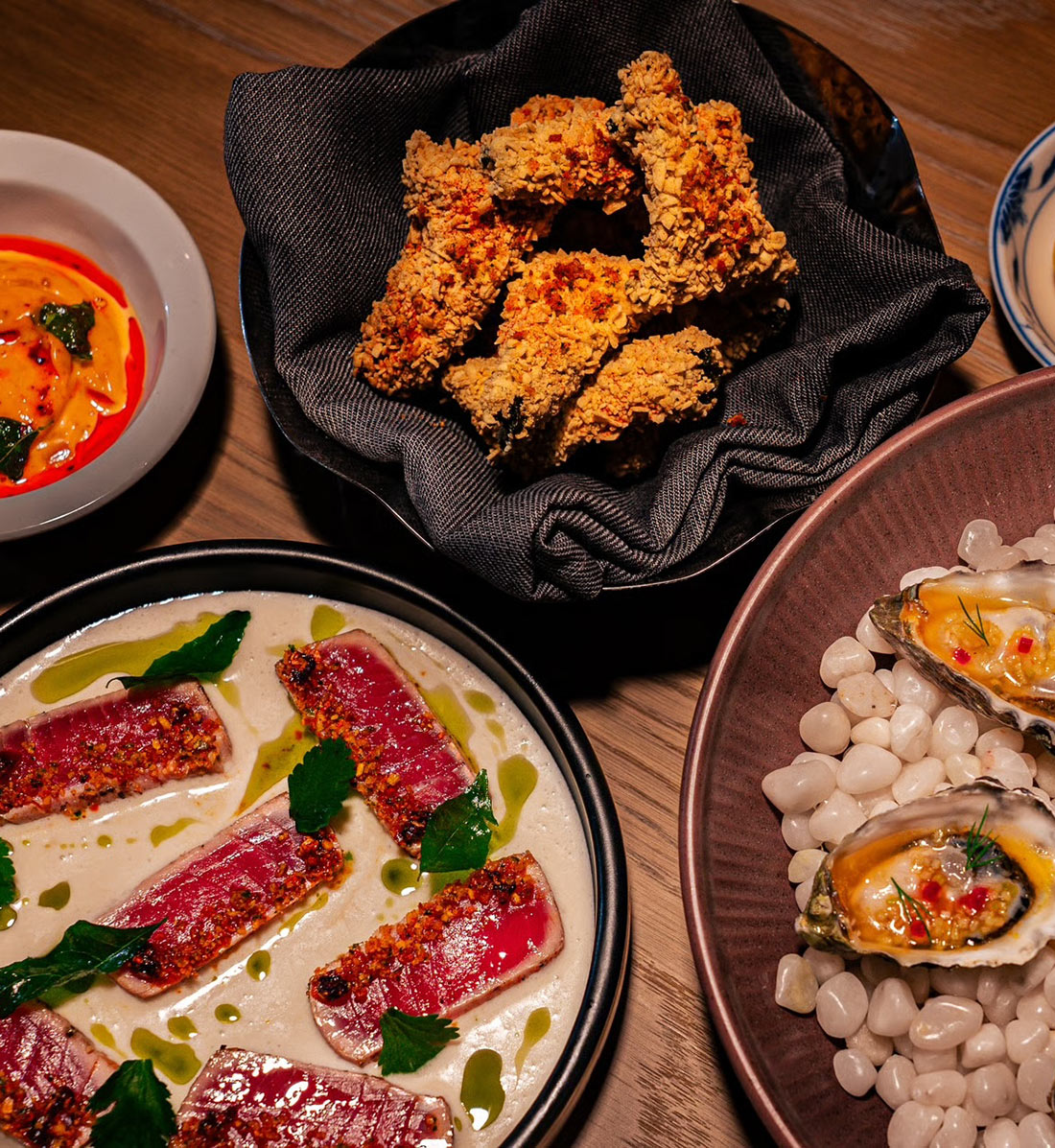Every culinary culture has its unique history and time-honoured traditions, but every culture also develops and changes over time, and Malta’s rich food and restaurant scene is one that successfully balances recognisably traditional flavours with contemporary tastes and a seasonal – often sustainable – ethos, in order to stay in tune with modern eating habits.
Let’s see how two of Malta’s most popular restaurants, Aaron’s Kitchen and One Michelin Starred Bahia, showcase the flavours of traditional dishes.

Set in the heart of the capital, close to St George's Square, Aaron's Kitchen is a family run restaurant owned by Chef Aaron Degabriele, who offers freshly prepared Maltese and Mediterranean cuisine in a friendly, laid-back atmosphere. He uses market-fresh seasonal ingredients, so you’ll always find plenty of daily specials on offer – and each dish is freshly prepared to order.

Bahia sits on the first floor of the Corinthia Palace Hotel in Balzan, and is an elegant spot with a preserved orange tree at its centre – a reference to the prestigious naval orange it is named after. Here, Head Chef Tyrone Mizzi offers three menus: 'Past', 'Present' and 'Future'.
The 7 course tasting menu ‘Past’ is the result of historical research and uses ingredients and recipes from each of Malta's key time periods to create contemporary versions of time-honoured dishes. Represented are: The Stone Age (5800 BC – 2500 BC); The Phoenicians (712 BC – 280 BC); The Romans (218 BC – 870 AD); The Arabs (870 – 1090); The Knights Hospitallers (1530 – 1798); and The Maltese (1964 – yesterday). This menu is designed to pay homage to the diverse historical developments that led Malta and Maltese cuisine to be what it is today.

In many cultures, bread plays a significant role; both how it's made and how it looks are usually imbued with social, political and economic history – and it's no different in Malta, where ftira bread is something of a national icon. Dating from the 16C, its cultural importance was cemented in 2020, when it was added to UNESCO's 'Intangible Cultural Heritage' list. There are, of course, regional variations and everyone has their own favourite fillings; at Bahia dinner opens with ftira with house pickles and a pumpkin seed dressing – and gets diners in the mood to celebrate all that is best about Malta's cuisine.

As with many Mediterranean cuisines, cheese plays an important role, and in Malta, ġbejniet remains as popular as ever. This local sheep’s cheese is a versatile ingredient as it can be served many ways, including fresh, dried, cured or seasoned with pepper. At Aaron’s Kitchen it features in three different dishes: breaded in filo pastry with a pesto sauce; both fried and peppered in the antipasto – which also includes other Maltese classics, like sausage and bigilla (a dip made with tic beans); and as the filling in ravioli, accompanied by a lightly spiced sauce, basil and oregano. This is one of those ingredients that everyone just loves in one form or another!

Moving chronologically from the past to the present, Bahia's 'Past' menu opens with a dish inspired by ingredients from the Stone Age, including local red prawns, caper berries, fennel, sea herbs and lemon thyme, followed by a dish dedicated to the Phoenicians, comprising a spelt salad with a Melqart dressing. The Romans – who introduced olive oil and honey to the island – are celebrated with a light and delicious, locally produced olive oil mousse infused with a little honey. And the Arab influence is represented by the sumac tart, hummus and red lentils that accompany the fish of the day.

Any mention of cuisine in Malta must include rabbit. Stuffat tal-fenek is the national dish – a rustic stew of braised rabbit and vegetables – which has been around since the Knights of St John. At Aaron’s Kitchen it is enhanced with cooking juices and island herbs to accentuate its natural flavour and succulence, and comes accompanied by a side dish of locally sourced grilled vegetables that can include aubergines, cauliflower, peppers and courgettes. Giving it an authentic family feel, this is prepared using “mum’s own recipe” – and that includes her secret spice mix. For those who prefer their rabbit in a different form, Aaron's Kitchen also offers a starter of rabbit patties with caramelised onions, pale ale and marrow fat peas.
Meanwhile, at Bahia, rabbit is showcased in a dish called ‘The Knights Hospitallers’; here, the saddle is slow-cooked and served with Tuscan black truffles, chicken juices and crème fraiche. On occasion, the kitchen team use guinea fowl as the main ingredient instead, which is another ingredient brought to the island by the Knights.

History Bite
The Order of the Knights of St John – also known as the Knights Hospitaller or the Knights of Malta – was a religious order, initially set up to run a hospital for pilgrims in the Holy Land. Having been evicted from Rhodes by the Turks, they were gifted the island of Malta by Charles V. They ruled the island for around 250 years, from 1530-1798, when they were forced to leave by Napoleon Bonaparte, and their legacy lives on throughout the island today.

Braġjoli – also known as 'beef olives' due to food’s shape rather than its content – is a dish of slow-braised, stuffed rolled beef. It is prepared the traditional way at Aaron’s Kitchen, slow-cooked with tomatoes and a red wine sauce, while at Bahia it is elevated to new heights by their choice of beef cheek and accompanying smoked celeriac purée and egg yolk confit. This is a dish that displays the kitchen’s considerable skill and makes great use of modern cooking techniques to truly reinvent a classic Maltese dish; as such you will find it on their 'Future' menu.

When it comes to dessert, you can’t get more classical than imqaret; named after this sweet treat's diamond shape, these deep-fried pastries come with a spiced date filling. They are also of Arabic origin and were introduced to the island during the Arab invasion in 870 AD. The traditional accompanying flavour of aniseed is evident in Bahia’s version of imqaret, but here they also add an almond and aniseed olive oil cake, almond ice cream, a florentine, date and orange purée, and a mousse to contrast with the crispy texture of the pastry. At Aaron’s Kitchen, the imqaret also come with ice cream – this time in a hazelnut flavour – and the generous portion size ensures that you won’t leave hungry!
And it's not just Aaron's Kitchen and Bahia that celebrate Maltese traditions. Whatever the menu, every diner lucky enough to visit a Michelin recommended restaurant will find cuisine satisfying in flavour, rewarding in taste and, more often than not, rich in history. This is a land where many influences have come together to create a vibrant and hugely appealing culinary culture.
Hero photo: From Bahia's 'Past' menu, inspired by ingredients used during the Stone Age (5800 BC – 2500 BC): Charred local red prawn, prawn and white miso glaze, caper berry mustard, prawn chawanmushi, fennel, sea herbs, white prawn waffle, caper gel, lemon thyme.



















